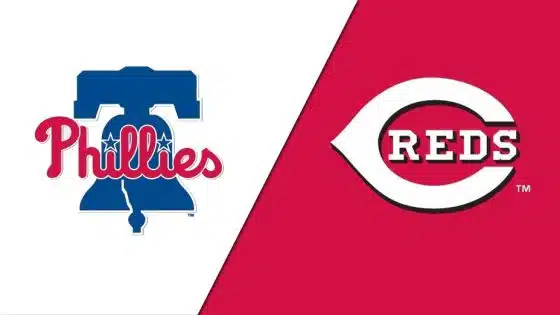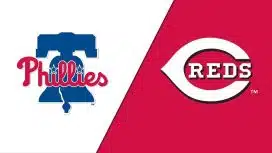By Tim Kelly, Sports Talk Philly editor
Perhaps the most controversial signing in what turned out to be a busy week for the Philadelphia Phillies was that of veteran reliever Tommy Hunter to a two-year/$18 million contract. Though Hunter is coming off of a strong season with the Tampa Bay Rays, the signing apparently wasn't viewed as a good one in league circles.
Jayson Stark appeared on The Mike Missanelli Show on 97.5 The Fanatic Thursday, and had this to say of the signing:
"I would say the deal that raised the most eyebrows, maybe of any signing at the Winter Meetings, was Tommy Hunter. I had a guy from one team – it's a team that used to employ him, by the way – tell me he thought it was the worst contract of the entire offseason."
Stark apparently wasn't the only one that heard executives scoff at Hunter's deal. Jon Heyman of FanRag Sports – in a piece where he called Hunter one of the biggest winners of the offseason and the Phillies (prior to the Carlos Santana signing), one of the biggest losers – said this of the Hunter signing:
No one could believe it when he got $18 million for two years from the Phillies. He throws hard but just doesn’t have the consistency of performance to warrant those type of dollars.
Hunter, 31, made the Tampa Bay Rays in 2017 after signing a minor league deal that included an invite to Spring Training. He rewarded the Rays for the chance they took on him, as he posted a 2.61 ERA and 3.07 FIP in 61 games with the team.
His prior two seasons were mixed bags. In 2015, he posted a 3.63 ERA (but a 3.38 FIP) in 39 games for the Baltimore Orioles, before being traded to the Chicago Cubs. He didn't have a memorable tenure with the Cubs, as he posted a 5.74 ERA in 19 games. In 2016, the scripts flipped, to a degree. He posted a 3.74 ERA (but a 3.15 FIP) in 21 games for the Cleveland Indians. After the eventual American League champions released him in late August, Hunter returned to the Orioles, finding his form in his last 12 appearances, as he posted a 2.19 ERA.
So what changed for Hunter in 2017 that allowed him to put together a full season? As Stark alluded to in his interview with Missanelli, Hunter nearly doubled the usage of his cutter in 2017 (per FanGraphs), probably improving the effectiveness of his four-seam fastball:
By increasing the usage of his cutter, Hunter may have allowed himself to become a more effective pitcher. So when executives from other organizations point back to bumps in the road that he may have had in 2015 and 2016, that may be a flawed argument.
In any event, the Phillies aren't asking Hunter to be a superstar in their bullpen. They want him to be part of what they hope will be an effective unit with Hector Neris, Luis Garcia, Edubray Ramos, Hoby Milner, Adam Morgan and the recently signed Pat Neshek. With a young starting rotation, one that's likely to be thin on pitchers that can consistently pitch deep into games, the Phillies want to build a deep bullpen that they can turn to for three or four innings in many games. Hunter is part of that plan.
It appears, from here, that some around the league may be irritated that the Phillies, in their opinion, overpaid for Hunter and Neshek to assure they landed both of them. Not only did this eliminate other teams from being able to sign either of the two, but it also raised the price on other available relievers. For the Phillies, it allowed them to fill out their bullpen with two veterans that had very nice 2017 seasons. When you consider that Ryan Howard, Michael Saunders, Clay Buchholz, Jeremy Hellickson and Matt Harrison made up nearly half the team's payroll in 2017, the Phillies could afford to overpay a bit in the short-term with someone like Hunter. So they did.





